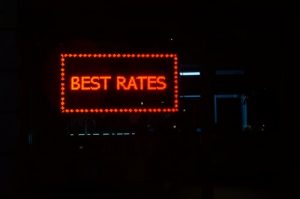Understand how long HELOC’s initial interest rate is valid, check rate limit details, and buy from multiple lenders for the best price.
When considering a home equity line of credit, you should first think about the lender who has your first mortgage. You have a solid payment history in a timely manner and the lender has recorded your information. But convenience can come at a price.
It all depends on how this lender is compared to other lenders in some key factors.
The first thing to consider is the HELOC interest rate. A HELOC has a variable interest rate that goes up and down relative to an index like the prime rate. However, you also need to factor in upfront costs, closing costs, and annual fees. These can vary widely from lender to lender, so it’s worth taking a look around.
Here are nine other things you should do before you tie-up with a specific lender. When comparing prices, don’t be afraid to ask specific questions, as they can all have a significant impact on the cost and suitability of your home loan line:
1. Check the validity period of the initial HELOC fees
Some lenders will try to hook your business up with a low introductory rate. This is fine as long as you know how long that low rate will last and how long it will last after the introductory phase.
2. Understanding the rate index and labeling
A lender can tell you that your HELOC interest rate is based on the prime rate. Sure, but don’t assume it’s just the key rate. This is probably the key rate or some other index plus a premium. For example, if the base rate is 3% and the margin (or margin) is 2%, your interest rate is 5%. You always pay 2% on the premium.
3. Make sure the HELOC brand does not increase
The difference between your base index rate and the rate you paid, sometimes referred to as a margin, maybe the result of a temporary margin discount. The assumption that the interest spread will always be locked in where it begins can be a costly mistake.
4. Find the lowest HELOC rate limit
Your HELOC may have a maximum interest rate limit for a certain period or for the duration of the loan. This can be of great benefit in an environment of rising interest rates.
5. Know when the HELOC draw period ends
You can withdraw money from your line of credit during the “payment” or “advance” period. After the withdrawal period has expired, you can no longer withdraw any money and the repayment period begins. You certainly want to know how long the draw period is.
6. Understand how HELOC Global Payments work
Some HELOCs have lower monthly payments during the repayment period and a single payment at the end of the term called a balloon payment. This may be acceptable for your situation, but keep the balloon payment due date on your radar so you can schedule it.
7. Look for the most flexible HELOC terms
If a lender needs a minimum withdrawal amount or a minimum loan amount, you lose some of the flexibility of a HELOC. And you pay interest on designs that you might not need.
8. Pay attention to inactivity fees
Equally bad: pay a fee if you don’t make a withdrawal. Inactivity fees mean that something that amounts to unfair treatment is charged for non-use.
9. Watch out for prepayment penalties
What happens if you decide to sell your house? Of course, you will have to pay HELOC, but some lenders may also charge a fee to prepay or cancel the line of credit. Avoid getting a HELOC with a prepayment or cancellation fee if you think you can sell the house within that time.
If you have substantial equity in your home, you might be tempted to hit the maximum level allowed. Just like there is a large amount of credit available on a credit card, it’s easy to spend a little here, a little further, and in the end, use up most of the equity in your home. . No matter where you get your HELOC and no matter how many lines of credit the lender offers, just take what you need and you can pay.



